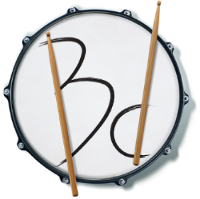How to Create Drum Fills
In most contemporary music, the primary purpose of the drums is to provide a solid groove, which consists of steady time and getting a consistent sound from the drums and cymbals. By extension, the drums have a lot of control over the general flow of energy in a song. If the drums drop drastically in volume, everyone else in the band is likely to follow. And it works the other way, too. Building in volume gives the impression that something big is coming up.
But only playing steady grooves with abrupt transitions between parts or sections of a song feels pretty jagged, even with changes in dynamics. Thankfully, drum fills can go a long way to help smooth over transitions and make the drum parts engage with the rest of the music more.
What are Drum Fills?
Contrary to popular belief, drum fills don’t exist solely as an opportunity for the drummer to show off. They have tons of musical utility that can really make the difference between an outstanding performance or a mediocre show of musicianship.
A drum fill is a brief deviation from the primary groove that helps to keep the listener engaged, and often behaves as a way to more smoothly transition from one section of a song to another. Drum fills can appear in countless forms and be as short as a fraction of a beat, or be multiple measures long. They’re typically improvised, but always depend on context, meaning that a fill you would play in a hard rock song might not be the right choice for a slow, soft jazz ballad. All that being said, it’s important to start with some basic vocabulary before you can improvise drum fills on your own.
Starting Simple
We’ll begin by playing a drum fill that occurs only in beat 4. As 8th notes, play a flam on the snare drum right on 4, and then play the kick on the ‘&’ of 4. To give it some context, we’ll play in 2-measure phrases, where the fill will only occur during the last beat of the second measure. After the fill, play the kick and crash together on beat 1 as you return to the original groove.
Next, we’ll play a full beat of 16th notes at the same position as the previous fill. Play them on only the snare drum at first, but also try them on each drum as you get more comfortable with the fill.
We can extend the fill slightly so it begins on beat 3. Allowing a little more space for the fill helps provide some breathing room, which keeps the feel nice and smooth. We’ll also break the rhythm up a bit, too. We’ll play 8th notes during beat 3, and 16th notes during beat 4. Start on just the snare drum and gradually explore other placements of this rhythm as you get more comfortable with it.
Considering Musicality
Cool, so we have a couple of basic short fills that can be used to break up grooves a bit, but those ideas might feel kind of jarring if used as a transitional device, or used to switch from one groove to another part. Extending drum fills beyond the span of a single beat opens up countless other possibilities, which can be used to better direct the flow of the music.
A drum fill doesn’t have to be rhythmically complex or flashy to be effective. Dynamics are an excellent tool used to further shape rhythms. Something as simple as steady 8th notes played between the floor tom and snare drum in unison can have a powerful effect when dynamics are applied. If we have 4 beats of 8th notes, but start the measure quietly and gradually build volume throughout the measure, the dynamics give the rhythm more motion. It feels like it’s leading to somewhere else, perhaps a part with more energy where we switch to playing on the ride cymbal instead of the hihats.
4-beat fill #1
For an even more dramatic effect, we can play an entire measure of 16th notes and grow in volume throughout the measure. Again, it’s rhythmically basic, but the dynamics make it much more engaging. You could also orchestrate the 16th notes various ways around the drums, such as switching to a different drum each beat.
4-beat fill #2
4-beat fill #3
From there, it comes down to tons of trial and error, as well as imitating your favorite drummers to continue expanding your vocabulary and improve your musical sensibilities. Getting a feel for what fits a particular context simply takes a lot of time, but it never hurts to start simple. As long as you’re playing with musical intent in mind, you’ll be in good shape!






